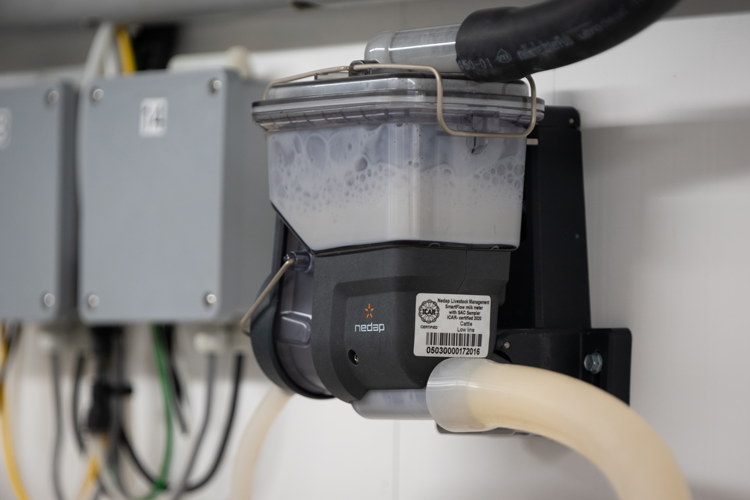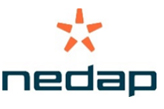
How can you get more from your data investment and positively impact your farm’s bottom line? Begin by tracking and acting on the right information.
Matt Lange, dairy business consultant and owner of Intagral Financial, says the most successful dairies excel in six essential herd management areas.
“These six management areas are not new. They’re the same ones dairies have always focused on to drive profitability. But, it’s now more important than ever to dial in these areas as the cost of production is at an all-time high.”
Advances in herd monitoring technology and data management give today’s dairy farmers the data they need to better track herd performance in these areas and make more informed, profitable decisions. This knowledge also helps farms monitor against procedural drift or adjust protocols when needed.
“Technology has become an essential part of managing a profitable dairy,” says Tera Baker, Nedap livestock marketing manager for North America. “You can use data to investigate deeper and see what’s happening on your dairy down to the minute, then use that information to drive positive change.”

Track these six performance benchmarks to help your dairy stay in the black and gain optimal return on your investment:
1. Energy-corrected milk
“Progressive dairies don’t talk about pounds of milk; rather, they focus on pounds of energy-corrected milk, and many nutritionists are starting to think in this direction as well,” says Lange. “It’s about creating and increasing components rather than focusing on whole milk.”
This focus becomes especially important for farms facing production caps from processors.
Data show that top-performing herds average about 95.5 pounds of energy-corrected milk per cow per day compared to lower-performing herds averaging 79 pounds per cow per day. This equals about $1.40 per hundredweight (cwt) difference in profit.[1]
Many top performing dairy businesses are achieving more than 7.5 pounds of combined butterfat and protein per cow per day, leading to greater energy corrected milk and stronger revenues and earnings.
2. Somatic cell count
While dairies may receive premiums for somatic cell count (SCC), that’s not why it has a major impact on profitability, notes Lange. SCC is an indicator of overall herd health.
“Some of the most profitable herds spend more on medication and veterinary costs, not less. It’s about preventative care rather than reactionary care,” says Lange.
Knowing which cows need intervention helps target health-related actions – and costs – where they’re needed most. Lange’s data indicates the top one-third of herds with lower SCC scores earned $0.70 per cwt. more than the bottom third of herds with higher SCC scores.
3. Pregnancy rates
Dairy farmers have made incredible strides in improving reproduction, with many of the most profitable dairies averaging 40% pregnancy rates.1 Heat detection technology has played a significant role in this advancement, but there’s room for improvement in other areas.
“Days open is a major metric we often need to improve,” says Lange. “For example, if you can reduce days open from 115-120 days to 110 days, data shows you can capture $1-4 per cow per day of increased value.”
Finding and identifying open cows to breed back quicker is a huge benefit of accurate data.
4. Heifer survival rate
Heifer-raising costs continue to climb. The average cost to raise a heifer 4-5 years ago was $1,800. Today, it costs $2,400 on average to raise a heifer.1
Improving heifer survival rate by focusing on young animal health and only breeding for the heifers you need for replacements will greatly impact your overall profitability. The most profitable herds achieve less than 10% heifer removal rate due to culling and death loss.1
5. Death loss
Because of how costly it is to raise an animal, improving cow longevity is critical. A cow must make 32,000 pounds of lifetime milk production before she starts providing a return on investment.1
“Focusing on transition cow and early lactation data is incredibly important to reducing death loss and improving profitability,” adds Lange. “If you lose a cow in the first 60 days of lactation, she hasn’t provided enough return to offset the costs incurred in the dry period. And when a first-lactation animal is lost, not only have you lost rearing costs, but you’ve also lost upwards of $7,000 to $10,000 in opportunity cost.”
6. Net herd turnover cost
One of the most important – but often overlooked – data points on a dairy is net herd turnover cost (NHTC). This calculates the cost of the change in one mature cow leaving the herd and her replacement.
NHTC is the third highest cost on most dairy farms, with a 2023 industry average of $0.90 per cwt. Data shows that the most profitable herds have a lower NHTC resulting from a 30% or less total replacement rate.1 These dairies are maximizing longevity to get more out of their herd.
“To me, cow longevity is the holy grail in everything we do,” says Lange. “Net herd turnover cost is an incredibly important metric and, in many cases, we’re culling animals too soon.”
Use data from herd management systems to help improve decision-making on culling, breeding, animal health and more, which can influence NHTC.
“Access to accurate activity, health and production data is essential to tackling these six areas of dairy performance excellence,” concludes Baker. “Rely on relevant and dependable data to provide timely and compelling insights into cow behavior and productivity to ensure your herd is functioning at peak performance to help your farm achieve its ROI goals.”
Visit Nedap-livestockmanagement.com to learn more about tools to help improve your farm’s return on investment.

Nedap develops Technology for Life. Technology that helps people become happier and more successful in their professional lives. Technology, with a sustainable impact. At Nedap Livestock Management, this means we improve life on the farm for people and animals. By helping livestock farmers to feed the growing world population in a profitable, sustainable and enjoyable way. A publicly listed company, Nedap employs more than 1,000 people globally, across 10 locations and seven business units.


